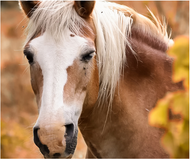Do's & Dont's Of Horse Worming
Posted by Darren Walton on 30th Aug 2022
For a full list of products go to our horse wormers page
With the onset of the winter period many horse owners’ minds will be turning to the issue of worming their horse. It is important to follow some simple rules when deciding on when to worm as well as which horse wormer to select for the job.
Historically horse owners would administer anthelmintics rotationally or as a matter of course. With the development of resistance to a number of wormer ingredients this practice has necessarily had to change. As such the following do’s and don’ts should help owners navigate the minefield of information regarding treatment of their animal.
- 1.
The best way to establish the need for worming is the use of a Faecal Worm Egg Count. Whilst these will not indicate the presence of all worms, for example tapeworm or encysted redworm, they will indicate the level of worm burden your horse is likely to have. This will allow an owner to decide on the most suitable course of treatment in conjunction with their Vet, Pharmacist or SQP.
- 2.
As faecal worm egg counts will not show tapeworm burden owners have a choice regarding management of tapeworm risk. Ideally a tapeworm antibody test should be carried out – this can either be via a blood test via your veterinary surgeon, or using a saliva test such as Equisal. This will indicate if your horse has antibodies for tapeworm which will establish whether they have had tapeworm in the last 6 months. From this an owner can decide whether tapeworm treatment is required or not. Failing this, tapeworm should be treated at least every 6 months – ideally at the beginning and end of the grazing season – Spring & Autumn.
- 3.
As faecal worm egg counts will not show encysted small redworm burden either management of this is realistically only possible with treatment. There are two possible approaches to this. Either redworm in the gut must be eliminated before they begin to encyst – this would involve worming and worm egg counting before the temperature drops in the autumn. However, as there are no hard and fast rules as to when encysting is likely to occur, the safest approach is to treat mid winter. Ideally a Moxidectin based wormer should be used as this is the only product licensed to kill encysted redworm whilst they remain encysted in the gut wall. If this is not possible then a 5 day course of fenbendazole can be used but this can encourage the encysted redworm to burst out into the gut causing potentially fatal colic.
- 4.
Establishing the weight of your horse is vital, this can be done using a weigh bridge or a weight tape. It is essential not to under-dose your horse as administering a sub-lethal dose to the worm population can result in some surviving treatment and passing on ‘immunity’ to the next generation. Not only will this lead to resistance developing to more wormer groups but also means owners will have wasted their time and money as the horse will still have a worm burden following treatment.
- 5.
Always follow the manufacturer’s instructions once you have selected your wormer. Product is to be administered only in accordance with these guidelines. If your horse is difficult to worm by means of a syringe then you should select a wormer which can be administered in the feed. Syringe wormers are not to be mixed in feed as you cannot ensure that the complete dose is consumed. If there are no suitable wormer ingredients for the worms you need to treat, which can be administered via the feed, then you should consult your vet for further advice.
- 6.
If your horse spits out the wormer and therefore does not receive the full dose required you will need to dose again using the complete amount required. You also need to ensure that the wormer is cleared up thoroughly to ensure no other animals consume this.
- 7.
There is no need to keep your horse stabled after worming – except in the case of wormers which have specific indications to this effect. This is to prevent harm to the environment rather than to prevent pasture contamination. However, when worming a new arrival the horse should be stabled for 48hrs to prevent any potential new worm types being brought onto the pasture.

